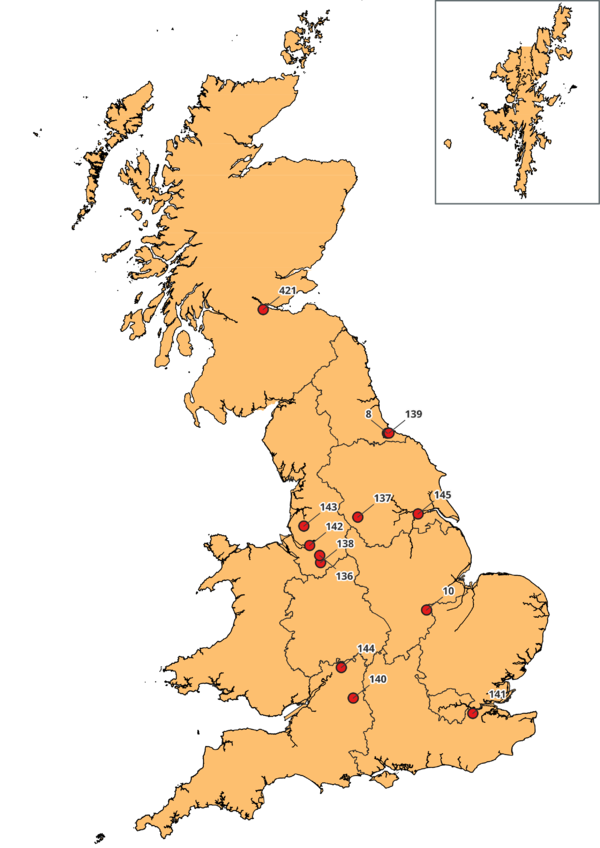Hazardous Landfill
Only a Hazardous Landfill can accept Hazardous Waste for Landfill Disposal but only then if it meets the relevant standards for engineering and management controls and Waste Acceptance Criteria set out in the Annex to the EU Decision (2003/33/EC)[1], but it may also be able to accept small quantities of Inert Waste.
Arrangements
Only a Hazardous Landfill can accept Hazardous Waste for Landfill Disposal but only then if it meets the relevant standards for engineering and management controls and Waste Acceptance Criteria set out in the Annex to the EU Decision (2003/33/EC)[2], but it may also be able to accept small quantities of Inert Waste.
Hazardous landfill sites cannot accept Non-Hazardous Waste. There are some restricted circumstances in which Non-hazardous Landfill can accept Hazardous Waste, these are described further below. The WikiWaste page Landfill frames these types of sites and puts them into a wider context.
There are numerical limit values for leachable inorganic substances, organic content along with standards for physical stability. These exist for both granular and monolithic hazardous waste.
Standards require Hazardous Waste that is disposed of with other Non-Hazardous Waste to be in separate engineered cells within the Landfill where Stabilised Non-Reactive Hazardous Waste or Gypsum Waste (normally plasterboard) is to be disposed of[3].
Hazardous Landfill Capacity
The capacity of Hazardous Landfill is reported[4] by the EA for England and is summarised in the graph and table below. Capacity for Hazardous Waste is split out into 'Restricted Sites' by the EA which totaled 722,708 cubic meters in 2015 and 832,407 cubic metres in 2019, dropping to 809,640 cubic metres in 2020. Note that Hazardous Landfill also provides Inert Landfill capacity in the sense that these waste are used for daily cover and site engineering purposes.
The number of 'Hazardous Restricted Landfill' (ref. L06) sites in England in 2020 was 5, with no change on 2019. The number of 'Hazardous Merchant Landfill Sites' (ref. L01) and summarised in the graph and table below totaled 12, a drop of 1 since 2019. There were no sites in Wales and only 1 site in Scotland with this classification (with thew capacity excluded from the figures set out below).
| <graph>{
"width":400, "height":200, "data":[{ "name":"table", "values":[ {"x":2015,"y":17.7},{"x":2016,"y":19.3},{"x":2017,"y":18.8}, {"x":2018,"y":19.1},{"x":2019,"y":18.4},{"x":2020,"y":15.6} ] }], "scales": [ {
"name": "x",
"type": "linear",
"range": "width",
"zero": false,
"domain": {"data": "table", "field": "x"}
},
{
"name": "y",
"type": "linear",
"range": "height",
"nice": true,
"domain": {"data": "table", "field": "y"}
}
], "axes": [ {"type": "x", "scale": "x", "format":"d","title":"Year"},
{"type": "y", "scale": "y", "grid":true, "title":"Million Cubic Metres"}
], "marks": [ {
"type": "line",
"from": {"data": "table"},
"properties": {
"enter": {
"x": {"scale": "x", "field": "x"},
"y": {"scale": "y", "field": "y"},
"stroke": {"value": "steelblue"},
"strokeWidth":{"value":2}
}
}
},
{ "type": "symbol",
"from": {"data": "table"},
"properties": {
"enter": {
"x": {"scale":"x","field": "x"},
"y": {"scale":"y","field": "y"},
"fill": {"value": "steelblue"},
"size":{"value":15}
}
}
} ] }</graph> |
| Year | 2015 | 2016 | 2017 | 2018 | 2019 | 2020 |
| Million Cubic Metres | 17.7 | 19.3 | 18.8 | 19.1 | 18.4 | 15.6 |
Hazardous Waste Sites

References
- ↑ EU Council Decision (2003/33/EC) establishing criteria and procedures for the acceptance of waste at landfills pursuant to Art 16 of and Annex II to Directive 1999/31/EC
- ↑ EU Council Decision (2003/33/EC) establishing criteria and procedures for the acceptance of waste at landfills pursuant to Art 16 of and Annex II to Directive 1999/31/EC
- ↑ Defra, 2010. Environmental Permitting Guidance: The Landfill Directive for the Environmental Permitting (England and Wales) Regulations 2010. London: Department for Environment, Food and Rural Affairs, p.7.
- ↑ EA Remaining Landfill Capacity
